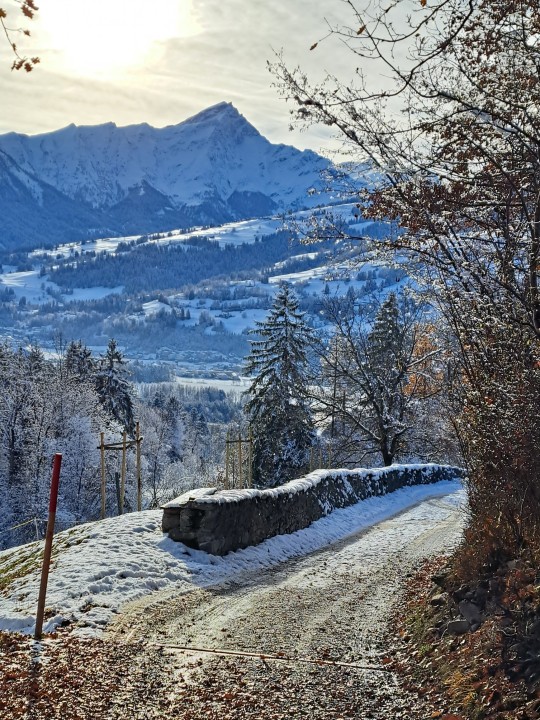#Viamala
Text

Viamala - Switzerland ((by Anna Jewels (@earthpeek))
https://www.instagram.com/earthpeek/
#Viamala#Switzerland#Swiss#Schweiz#Europe#Nature#Outdoor#Bridge#Landmark#Photography#Travelling#Traveling#Tourism#Holiday#Urlaub#Reisen#Vacation#Fotografie
299 notes
·
View notes
Text

Viamala Gorge, Switzerland by Christoph Ruckstuhl
via
0 notes
Photo

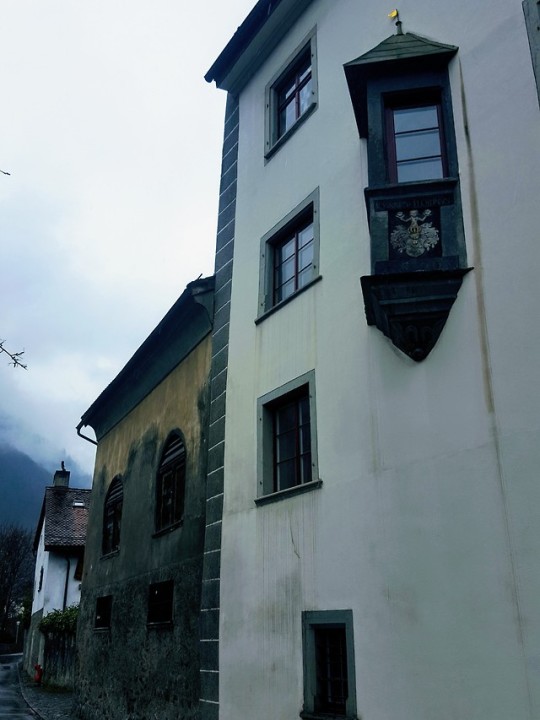







As long those slippery cobblestones and a cold drizzle don’t ruin your mood, a stroll through the oldest Swiss town can definitely have some charm. Even though not exactly the first name springing into mind, you’ll recognize in Chur the swissness of its old town alleys, bland stone walls marked with cryptic heraldry, imposing seriousness, stability and frigid dampness. As you sulk along hoping the perseverant drip won’t find a way through your seams, suddenly an old painted house bemuses you with an arguably out of place liveliness… or is its energy just out of its time? Were the Swiss different in those days?
Nevemind that thought, time for a pint in some dry place, not far from the growing waters of the Rhine. The local Viamala golden lager is following the traditional brewing around here - bready and smooth with a discrete vein of hops. Yup, the Stadtbier Chur does good stuff and true to the tradition.
#switzerland#chur#rhine#travel photography#rain#swiss beer#stadtbier#graubünden#viamala#helles#yum#craft beer#nobeerreviews#nobeertexts
2K notes
·
View notes
Photo

#Punt da Suransuns#Jurg Conzett#1990s#contemporary architecture#Architecture#bridge#river#rock#mountains#outdoors#nature#trees#forest#Via Mala#Viamala#switzerland#europe
5 notes
·
View notes
Photo

Even on the fantastic slopes of Splügen you can feel like if you're in paradise 😌🙏🏼 • 🌍📍 Splügen, Switzerland • #switzerland #splügen #viamala #splügentambo #swissalps #graubünden ##paradise #snow #snowmountain #mountains #alps #swiss #switzerland🇨🇭 #switzerlandphotos #switzerlandphotographer #photography #photos #snowphotography #snowphoto #travelphotography #travel #whereismyolaf #instasnow #instamountains #myswitzerland #schnee #sunnyday #cloudyday #snowday @spluegentambo @myswitzerland @ig_of_switzerland (presso Splügen-Tambo Bergbahnen) https://www.instagram.com/p/CYm0EoAjezT/?utm_medium=tumblr
#switzerland#splügen#viamala#splügentambo#swissalps#graubünden#paradise#snow#snowmountain#mountains#alps#swiss#switzerland🇨🇭#switzerlandphotos#switzerlandphotographer#photography#photos#snowphotography#snowphoto#travelphotography#travel#whereismyolaf#instasnow#instamountains#myswitzerland#schnee#sunnyday#cloudyday#snowday
0 notes
Photo

#gutemorgen #viamala #graubuenden. Auf dem Weg von Bonaduz nach Ilanz. Valendas vielleicht? #mylifeineurope #iloveswitzerland #schweiz #vistschweiz #switzerland #visitswitzerland #visitgraubünden #splendid_mountains #splendid_woodlands #splendid_nature #splendid_shotz #bns_mountains #bns_landscape #dreaming_travel #dreaming_landscape #travel #traveling #swissalps (bij Valendas, Switzerland) https://www.instagram.com/p/Bnp96WUln1K/?utm_source=ig_tumblr_share&igshid=13f2k22attfty
#gutemorgen#viamala#graubuenden#mylifeineurope#iloveswitzerland#schweiz#vistschweiz#switzerland#visitswitzerland#visitgraubünden#splendid_mountains#splendid_woodlands#splendid_nature#splendid_shotz#bns_mountains#bns_landscape#dreaming_travel#dreaming_landscape#travel#traveling#swissalps
1 note
·
View note
Text

in the bottom there you could find the narrow gorge along the river "hinterrhein" between "zillis-reischen" and thusis in the "canton of graubünden", "switzerland "
#hinterrhein#zillis-reischen#thusis#switzerland#swiss#eric van norton#eric#canton#viamala#via mala#holiday#trip#europe#road trip#schweiz#canton of graubünden
0 notes
Photo

Under the Bridge by rasmas
7 notes
·
View notes
Photo

Viamala - Switzerland (by Anna Jewels (@earthpeek))
https://www.instagram.com/earthpeek/
#Viamala#Switzerland#Swiss#Schweiz#Europe#Nature#Landscape#Outdoor#View#Photography#Travelling#Traveling#Travel#Tourism#Holiday#Urlaub#Reisen
321 notes
·
View notes
Text
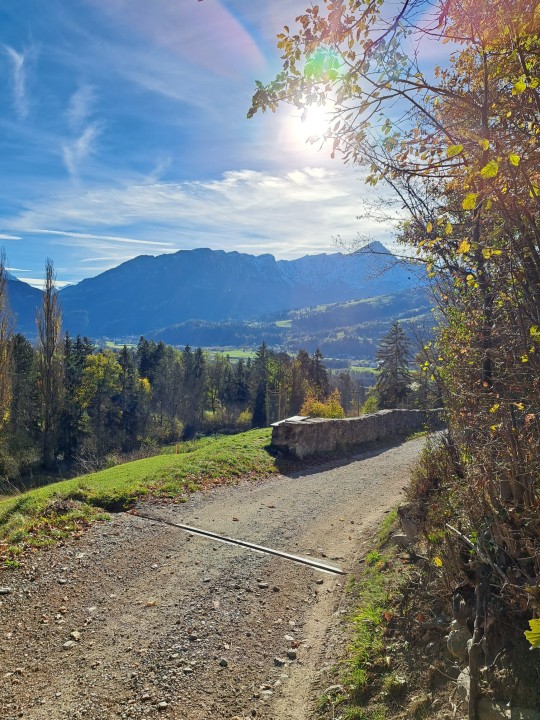
Landschaft Domleschg Heinzenberg.
0 notes
Photo
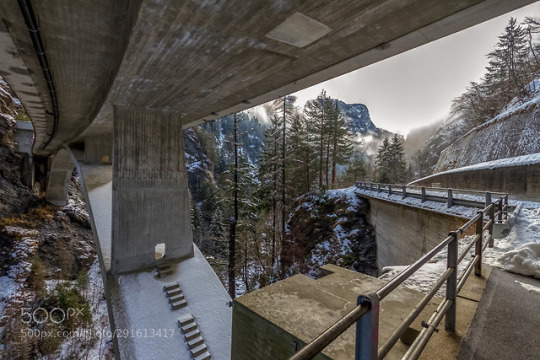
Viamala by rasmas
0 notes
Video
Viamala, Das Erfahrungsreich. Winter 2016-17; Graubünden, Switzerland by worldtravelLib - The Collection
Via Flickr:
Splügen, Rheinwald, Avers, Ferrera, Andeer, Zillis, Schamserberg, Thusis, Heinzenberg, Domleschg, Feldis, Mutten
#Viamala#2016#Winter#landscape#mountains#Berg#water#Graubünden#Switzerland#Schweiz#Suisse#Svizzera#world#travel#library#center#worldtravellib#Helvetia#Eidgenossenschaft#Confédération#Europa#Europe#papers#prospekt#catalogue#katalog#photos#photo#photograph#picture
1 note
·
View note
Photo

Quartz
Schin Gorge, Thusis, Viamala Region, Grisons, Switzerland
348 notes
·
View notes
Photo

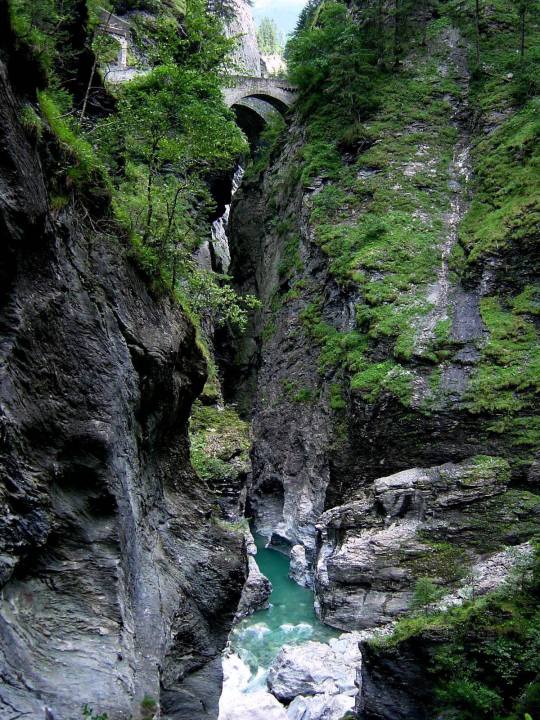
Viamala Gorge
Viamala is Latin for “bad path” and describes the path through a narrow and deep gorge in the Swiss Alps. It was used since the Roman Age when Viamala was an important way on the route from North to South Europe in spite of the threat of falling rocks and dangerous waters.
Situated between Thusis and Andeer the wild gorge with 300 meter cliffs is no longer the bane of travelers but a popular tourist destination. A hanging bridge and some staircases lead the visitor deep into the ravine. Some features of the ancient road are still visible coming down towards the river.
The gorge was cut deep into Graubunden slate by the Hinterrhein River. This type of slate was deposited at the bottom of the sea between Europe and Africa during the Jurassic and Cretaceous Period (100-200 million years ago) and later uplifted. The slate contains calcareous layers, however, a lack of fossils makes it hard to date the formation of the Viamala Gorge.
Xandi
Image Credits: http://bit.ly/2kGwdhQ http://bit.ly/2lbjZuK Sources: http://bit.ly/2krBGIG http://www.myswitzerland.com/en/via-mala-gorge.html http://bit.ly/2kO7JDY
#Viamala Gorge#Geology#Rome#Swiss alps#Switzerland#Thusis#Andeer#Cliff#Tourism#Bridge#Hinterrhein River#The earth story#Slate#Sediment
282 notes
·
View notes
Photo
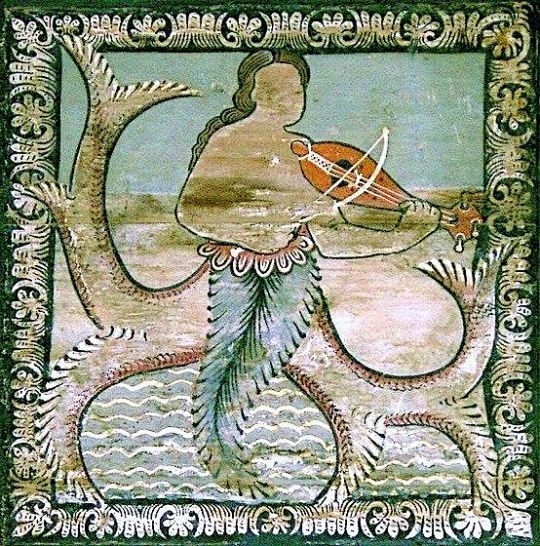
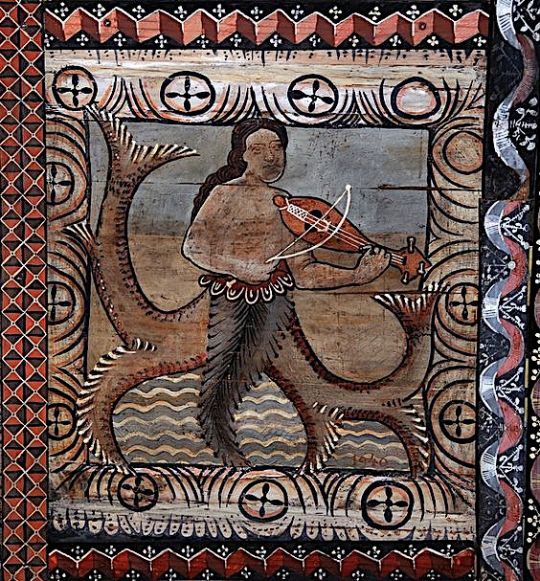

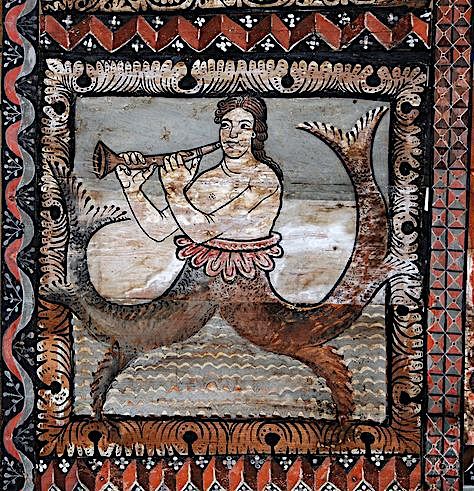
painted wooden ceiling panels from 1109 to 1114 in the romanesque St. Martin Church in Zillis, Grisons, Switzerland
I found this info from Flickr:
“The earliest preserved, figuratively painted wooden ceiling in Europe can be seen above the nave of St Martin's Church in Zillis. Today only three other painted ceilings from the Middle Ages remain: they are located in Hildesheim (St Michael's), in Peterborough Cathedral and in Dadesjo (Sweden). The Swedish church in Sodra Rada was destroyed by fire in 2001.
The ceiling paintings in Zillis demonstrate such a rich variety of form and contents as is only found in great works of art.
And so today the ceiling serves to illustrate the Gospel, Sunday for Sunday, from spring to autumn. In winter the parishioners do without heating in the church for the sake of the paintings and hold their services in the parish hall. Only funeral services and the school Christmas celebrations on Christmas Eve take place in the moderately heated church during the cold season.
St Martin's Church is situated below the historic centre of Zillis. At first, the church possibly stood directly above the wide bed of the Hinterrhein River. Zillis is one of the two settlements nestling at the bottom of the Schams Valley (Romansh: Val Schons), an inner-Alpine valley basin, through which a route has traversed the Alps at least since the Roman era. It used to link Bregenz with Milan, Lake Constance with Lakes Como and Maggiore. The Schams is the secondhighest section of the Hinterrhein Valley. It lies directly south of the Viamala Gorge, which on the northern side of the Alpine ridge represented the main obstacle on the route from Chur over the Splugen Pass to Chiavenna, resp. over the San Bernardino Pass to Bellinzona and Locarno. Throughout all the centuries Zillis occupied a very peripheral position on the inner border of the Alps, but was always on a route connecting the major settlements flanking the Alpine ridge.
THE PAINTED CEILING
THE CONCEPT OF THE PAINTED CEILING
The Zillis ceiling comprises 153 painted panels. They are slotted into longitudinal battens, which until 1938 were attached to the ceiling beams by long nails. Cross-battens are inserted between the painted panels as a connecting link, forming a regular grid. Doubled longitudinal and cross-battens accentuate the junctions of the grid, creating the shape of the cross.
The ceiling is enhanced by a meander frieze which was created at the same time; the greater part of the frieze was restored in 1938-1940. In the frieze we see female busts, representing the Classical sybils, whose prophesies were taken fro(ll late Antiquity onwards as a reference to the Advent of Christ.
The 153 panels are arranged as on a medieval map of the world. There is a border representing the ocean surrounding the Continent, on which the Life of Christ and the legend of St Martin are portrayed.
The border
At the edges of the ceiling, resp. on the borders of the world, swim mythical fish-tailed creatures; there are even some manned boats and music-making sirens on a continuous band of wavy lines, which represent the sea in a simplified and abstract form. Only the angels sounding their horns in the corners, marked as the south wind Auster and the north wind Aquilo, stand on firm land.
The inner cycle
On the interior fields, i.e. the Continent, the Life of Christ is depicted on 98 panels. One half describes Christ's childhood and youth, the other half recounts his miracles, his teaching and Passion. The individual scenes frequently continue over several successive panels. Each half has seven rows with seven panels. The last row of the interior panels is dedicated to the church patron St Martin.
The choir is the best place from which to view the first half of the cycle portraying the Life of Christ. Since the 1940 rearrangement the visitor has been able to «read» the pictures like a text from this vantage point, in rows running from left to right. The cycle begins with a gallery of Christ's ancestors, the Kings of the Old Testament, and the personifications of Synagogue and Ecclesia. The story of Christ's Life begins with the Annunciation of the Blessed Virgin, followed by Joseph's Dream, the Visitation and the four panels on the Nativity.
15 panels describe the Journey of the Three Magi. This is followed by the Purification and the the Presentation of the Infant Jesus in the Temple, the Flight into Egypt and the Massacre of the Innocents in Bethlehem, the Miracle of the Clay Pigeons, the 72-year-old Jesus in the Temple and the Sermons of St John the Baptist.
The second part of the Christological cycle begins with the Baptism of Christ and the Temptation by the Devil. These are followed by cases of miraculous Healings: in addition to the Wedding Feast in Cana and the Raising of Lazarus, we see the Healing of physically and mentally sick persons. The mentally disturbed were considered to be possessed by demons. After the miracles follow the Teachings of Jesus, the Transfiguration on Mount Tabor, the Entry into Jerusalem and the Expulsion of the Moneychangers from the Temple, the Last Supper, the MOunt of Olives, the Betrayal by Judas, Christ before Pilate, the Mocking of Christ and the Crowning with Thorns.
The cycle then breaks off. There is no consensus among researchers on whether this was, in fact, the original end of the cycle or if the Crucifixion and the Rising from the Dead were formerly depicted on the north wall of the nave or in the former Romanesque choir.
The last seven panels of the interior fields describe episodes from the life of St Martin, commencing with the Sharing of the Cloak, probably the best-known element of the legend. This is followed by the Consecration and the Miracle of the Raising from the Dead. The conclusion comprises three panels on St Martin's Encounter with a King who pretended to be Jesus but turned out to be the Devil.
As mentioned above, the panels were rearranged on the ceiling in 1940, the 1938 sequence having been described by experts as «absurd» und «unsystematic». An attempt to reconstruct the original order, based on the sequence of the pictures before 1938, gives the following results: the panels were arranged to be read by following the rows in an S-shaped order. In the centre of the ceiling there was the depiction of Christ's Baptism; in front of this, the scenes with St John the Baptist; behind, the four panels on the Temptation of Christ by the Devil.
During the Reformation the sequence of the panels was probably altered. In the cycle depicting the Life of St Martin, the consecration scene was removed from the central axis. The sermons of St John the Baptist and the Temptation of Christ by the Devil disappeared from the central row and were replaced by the cases of miraculous healing and depictions of Christ's teachings. From the 16th century until 1938 the Expulsion of the Moneychangers from the Temple, as a symbol of one of the Reformation's main tenets, was set in the centre of the ceiling replacing Christ's Baptism.”
7 notes
·
View notes
